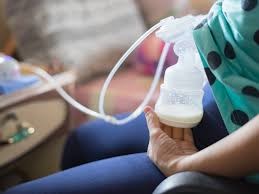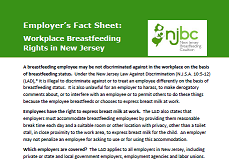
PUMPING AND RETURNING BACK TO WORK:
Did you know that you may be able to get a FREE breastpump through your health insurance? Under the Affordable Care Act breast pumps are covered under the majority of health insurance plans. Check with your health plan to find out how you can access a breast pump, free of charge. Here is a list of some companies that may provide a breast pump:
1 Natural Way 888-977-2229, #1
Acelleron Medical Products 877-932-6327, #1
Aeroflow Breastpumps 844-867-9890
Byram Healthcare 877-773-1972
Edgepark Medical Supplies 855-504-2099
Edwards Healthcare Services 888-344-3434
McKesson Patient Care Solutions 844-727-6667
Medline 877-436-8522
Med Source 888-510-5100, #1
Pumping Essentials 866-688-4203
Yummy Mummy 855-879-8669
* Note: This is a sample of the many companies that provide
breast pumps through individual health insurance. Each company
is specific to which health insurances they work with and various
pump options.
WIC participating moms may be eligible for a manual, single-user electric, or multi-user electric pump. WIC breastfeeding staff can help moms navigate how to get a breast pump through their health insurance carrier; we encourage all moms to contact her WIC office to speak with breastfeeding staff.

-
-
- Establish a Good Supply
Assess your breastfeeding status. Most moms return to work around 12 weeks post-partum. By this time, your milk supply would be established. Don’t worry or focus on pumping before your baby is 8 weeks, as it may create unneeded stress (unless medically necessary). The more often you feed the more milk you will produce. - Plan ahead
Prior to starting back at work, try pumping once a day around the 8-week mark to establish a “freezer stash” to give yourself peace of mind that there will be enough for backup and emergencies. The best time of day is usually in the morning when mother’s milk is most abundant. - Childcare plan
Seek out supportive childcare and discuss your plans to breastfeed. Address details such as milk storage and feedings time to be in-sync with your current schedule. It can be helpful to nurse the baby at the care center a few times prior to starting in order to help your child feel comfortable in that environment. - Pump plan
Pumping during the day can be essential. Look for a high-quality pump that allows you to pump both breasts at the same time. Check with your health insurance, as most plans will provide you with a free pump. Talk to your employer about how this can fit into your schedule and where milk can be stored. If your boss is uneasy, telling him or her that research studies show breastfeeding mothers take less time off work because their babies tend to be healthier could help allay concerns. If all else fails, remind him/her the federal law supports your decision. While you are pumping at work, try to remain stress-free and look at a photo or video of your baby while you pump, this will help your body to release oxytocin hormones that will allow the milk to flow easier. Be sure to clean your pump as needed, follow THESE simple steps - Storage
Know for storing your milk. Your first choice should be to store your milk in a refrigerator and have it fed to your baby within five days. Additionally, building a small freezer stash can be helpful in case you are not able to pump a lot on some days. You can store milk in a freezer between 6 and 12 months. Human milk can also safely be kept at room temperature for 6 to 8 hours. - BottlesThere is no rule stating your baby must take a bottle. With a young baby, most daycare providers will want to use bottles for feedings, but alternatives such as a small cup or oral syringe are options as well. If your baby is older than six months, you have options such as a sippy cup, adding milk to solid foods such as cereal, soups, or mashed vegetables. It can also be frozen into popsicles.
- Night plans
Plan for increased nighttime nursing. Many babies will start breastfeeding more often during the night than before you returned to work, especially during the first few weeks. There is a benefit to this: the levels of prolactin (the hormone that produces milk) are higher during night feedings, so this will help maintain your milk supply. This can also be tiring, so plan to maximize your sleep. - The best day to start back to work
Start back on a Wednesday or Thursday if you can. The first few days are likely to be the toughest, as you figure out pumping, milk storage and managing daycare. Having a shorter week to start means you will soon have the weekend to evaluate how things are going and make adjustments as needed. - Weekends
Breastfeed “on demand” on weekends. If you have noticed your milk production flagging during the week at work this is your chance to rebuild it and enjoy the convenience of a more natural nursing relationship. If you are pumping, the milk you stored on Friday will keep just fine in the fridge for baby to have on Monday. - Connect
Remember breastfeeding is so much more than a source of nourishment for most babies and toddlers. They nurse to reconnect with you after a long day apart, to feel comforted and in contact with you. Continued breastfeeding during the times you and your baby are together are very important to your child.
- Establish a Good Supply
-
Hand Expression of Breastmilk Video (Click Here)





